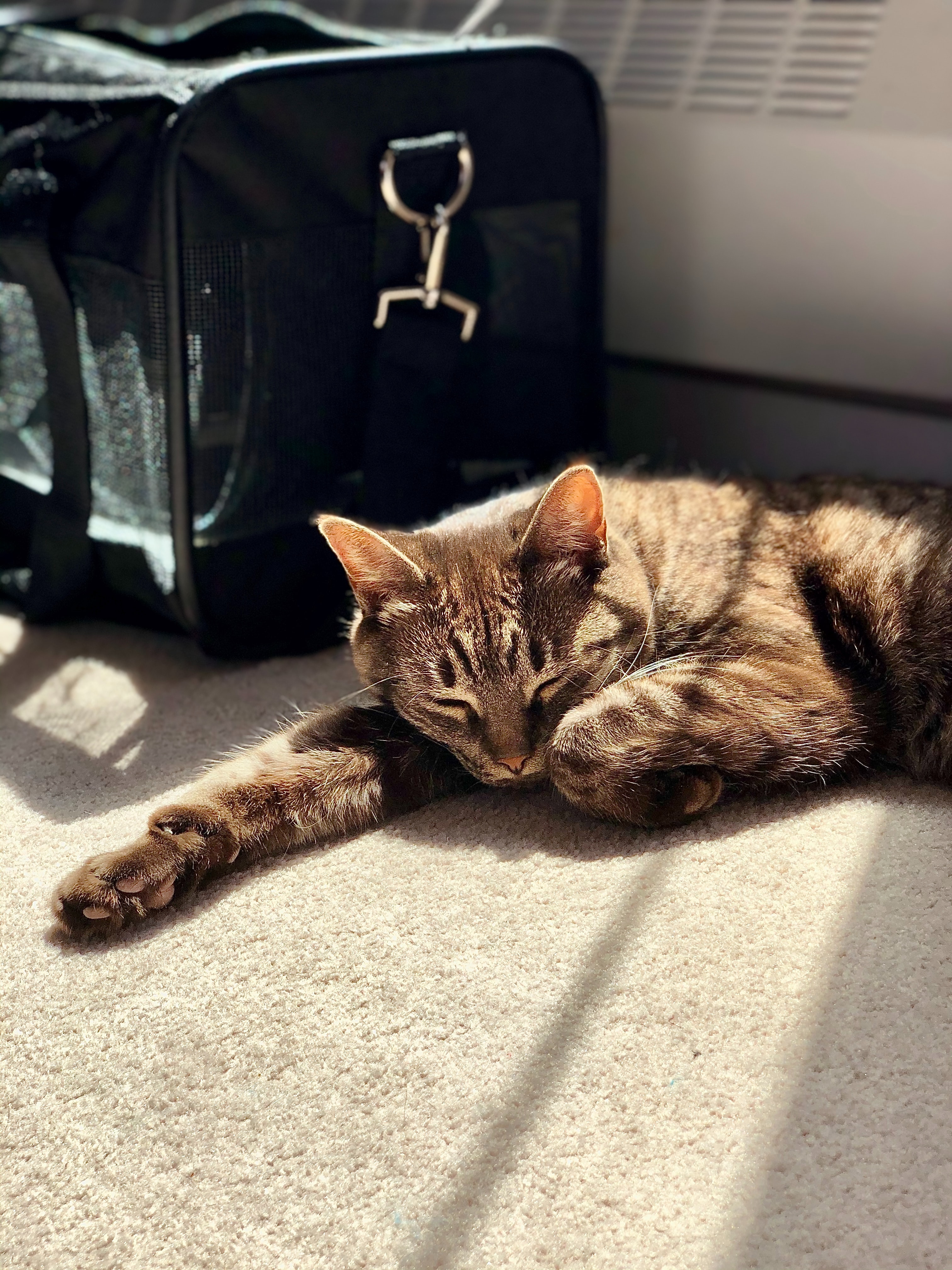If you’re here because you need your cat in a cage NOW, I suggest you tip the carrier with the end facing up and ease the cat in hind-end first. If you’re here because you want to work on making your cat’s cage experience stress-free, then you’re on your way to a worth-while endeavor! The carrier can be a place of sanctuary instead of fear. *We’ll talk about choosing a carrier in the future- but for now find a carrier that can have the top easily removed*
Do NOT make the carrier equate to a trip to the vet.
If you’re anything like the average person, you keep the cat cage hidden away in the closet or musty garage, only to come out when it’s time to go to the vet. Every time your kitty is in a carrier they 1) go to a strange, loud place full of unpleasant sounds and smells and 2) get poked by a needle or palpated when they don’t feel well. Sorry, bringing the carrier out a few days in advance won’t be sufficient either. If you’re truly ready to make the crate a stress-free environment, you must be willing to make it a part of your home. Place the carrier in an area your cat hangs out and let it live there! Sure, you can move it around the house once kitty starts accepting it, but don’t stick it back in the attic!
Make the crate/carrier a welcoming environment.
If we’re working on making the crate your cat’s new “happy place”, you should probably add some home-y touches to it. In a clean crate, place a soft blanket, a toy or two, and spray on feline pheromones for good measure. Feline pheromones such as Feliway or ThunderEase can be found at pet stores and even Walmart! Pheromones aren’t a miracle cure, but they can help your kitty be more receptive and calm when considering the carrier.
Hand out the treats!
If your feline friend approaches the carrier, give him a reward! For times when you’re not around the house, leave a novel treat in the carrier, and wait to see if it’s gone upon your arrival. If that’s going well, then point at the carrier before each meal and say “Crate!”, then proceed to place the bowl in the back of the cage. Leave the door open so he won’t feel trapped.
Teach him to go to the crate prior to giving food.
If you have spent enough time pointing and saying “Crate!” during meal time, chances are he’s already starting to anticipate the food when you walk toward the crate. Try your normal routine, except wait for him to approach the crate to give him the food. Reward small victories at first, then start waiting for him to go further into the cage for you to give the food. You should eventually be able to leave the food on the counter and have Fluffy enter the cage with just your verbal and visual cues. At this point, you can close the door in increasing increments. Need to go to the vet? Just point and say “Crate!” and he should walk in. If you want to add some fun to it, place the carrier in different areas of the house and treat him for walking in it.
*Practical Applications*
Do you have multiple pets in the house? Do they each have special diets or does one steal food from the other? Using cat carriers (or crates/kennels for dogs) can be invaluable in feeding time for multi-pet households. Train each animal to go to their own kennel for feeding time so you can make sure everyone gets their proper meal in the proper amount. Try stacking crates on top of each other in a way they’re supported (between a wall and a shelf) if you need to save room and have hard, flat-sided carriers.













